Summary of a series of Nordic events on the voluntary carbon market
October 16, 2024
Building capacity for best practices in the voluntary carbon market
In the Nordic region and worldwide, non-state actors are keen to contribute to global efforts to combat climate change in line with the Paris Agreement’s long-term goal to limit global warming to 1.5°C. However, they need support for building knowledge and capacity about the best practices for voluntary support for climate action and related communications and claims. In 2021-22, the Nordic Dialogue on Voluntary Compensation brought Nordic stakeholders together to co-create best practices for the voluntary use of carbon credits and recommendations for further Nordic cooperation. Following up on these recommendations, the Nordic Dialogue team organised a series of Nordic capacity building events in 2023-24 to inform Nordic stakeholders of the latest developments in best practices and foster Nordic networking and cooperation in this fast-evolving field.
These events were designed to help Nordic stakeholders to navigate the evolving landscape of voluntary carbon markets. In total, the events had over 350 participants from all Nordic countries – and beyond – and from a diverse range of stakeholders from the public and private sectors, academia and civil society. Key insights from the events have been summarised in a report, and recordings, posts and other material from the events are available on the Nordic Dialogue website.
The Nordic Dialogue and the capacity building events have been funded by the Nordic Council of Ministers’ Working Groups for Climate and Air (NKL) and for Environment and Economy (NME). Both initiatives have been implemented by Perspectives Climate Research in partnership with Carbon Limits, IVL Swedish Environmental Research Institute and Tyrsky Consulting.
Best practices in principle
All events started with an overview of best practice, drawing on the Nordic Dialogue’s key results (see Figure 1 for key elements). Best practice principles require all actors to prioritise reducing direct and indirect greenhouse gas emissions within their boundaries or value chains consistently with a 1.5°C pathway. In addition to internal efforts, best practice includes supporting mitigation also beyond the value chain, for example through the voluntary purchase of carbon credits. Best practice requires entities to use only high-integrity carbon credits, publicly disclose relevant information and avoid greenwashing when making any claims based on carbon credits.

Best practices in practice
Continuing cooperation as a community of best practice
The high participation rate and positive feedback highlight the importance of maintaining momentum in this field. The event participants appreciated the opportunities to connect with each other and explore different perspectives, especially through concrete example and case studies. They expressed interest in continuing to cooperate and learn together to address current challenges, for example by developing clear definitions, requirements and guidance; showcasing positive real-life examples, piloting new models and approaches; and creating collaboration networks, forums and platforms. These action points would support the continued need for raising awareness, building capacity and fostering Nordic cooperation on best practices for the voluntary carbon market.
The Nordic Dialogue and this series of capacity building events provide a solid basis for continuing Nordic cooperation on best practices for the voluntary carbon market. The next logical step is the creation of a Nordic community of practice for carbon credit markets, as recommended by the Nordic Dialogue and supported by feedback from event participants. By sharing experiences, challenges, and solutions, this network could foster a unified approach to best practices that is both credible and impactful, inspiring others globally to follow suit.

